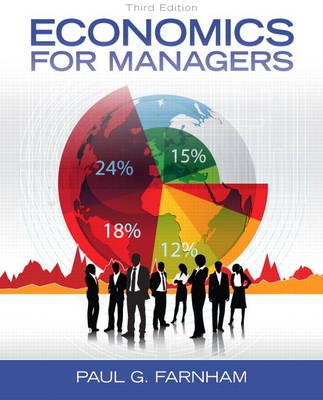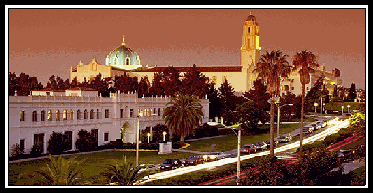
THE ECONOMIC ENVIRONMENT OF BUSINESS
 |
| Spring 2017 |
 |
Graduate (S) Business Administration 509 THE ECONOMIC ENVIRONMENT OF BUSINESS |
|
|
|
| | HOME | SYLLABUS | CALENDAR | ASSIGNMENTS | ABOUT PROF. GIN | |
Answers to Recommended Problems #2Chapter 10 1. a. Positive b. Zero c. Negative * * * * * * * * * * 2. a. m = -1 / (1 + -15) = 1 / 14 = 7% b. m = -1 / (1 + -8) = 1 / 7 = 14% c. m = -1 / (1 + -3) = 1 / 2 = 50% * * * * * * * * * * 3. a. m = -1 / (1 + -3) = 1 / 2 = 50% P = 10 * (1 + 0.50) = 15 => the optimal price is not being charged b. The price should be lowered to 15. * * * * * * * * * * 6. m = -1 / (1 + -2) = 100% m = -1 / (1 + -5) = 25% Ratio = (1 + 1.00) / (1 + 0.25) = 1.6 * * * * * * * * * * 8. a. Sports fans will buy the sports package (price = 50, maximum willing to pay = 50), parents will buy the kids package (price = 50, maximum willing to pay = 50), and generalists will buy the combined package (price = 70, maximum willing to pay = 80). Neither sports fans nor parents will buy the combined package (price = 70, maximum willing to pay = 60). b. The company makes a higher profit because, without the combination package, generalists wouldn't buy either package (price = 50, maximum willing to pay = 40 for each package). Extra - A more interesting question would be to determine the profit maximizing price for each package and for the combination (assuming equal numbers of parents, sports fans, and generalists): Sports package: P = 10 => all three groups buy => TR = 3 * 10 = 30 P = 40 => sports fans and generalists buy => TR = 2 *40 = 80 P = 50 => only sports fans buy => TR = 1 * 50 The profit maximizing price is $40, assuming no marginal cost for providing the package (which would be the case for cable television). Using the same approach, the profit maximizing price for the kids package is also $40. The total profit from selling both packages is 80 + 80 = 160. Combination package: P = 60 => all three groups buy => TR = 3 * 60 = 180 P = 80 => only generalists buy => TR = 1 * 80 = 80 The profit maximizing price for the combination is 60. Profit made is 180, which is higher than the 160 made when pricing the packages individually. * * * * * * * * * * Chapter 11 6. a. Nominal GDP = real GDP = $50 b.
c.
* * * * * * * * * * 7. Percentage change in nominal GDP = ($14,028.7 - $13,377.2) / $13,377.2 = 4.87% Percentage change in real GDP = ($13,206.4 - $12,958.5) / $12,958.5 = 1.91% GDP deflator 2007 = $14,028.7 / $13,206.4 * 100 = 106.23 Percentage change in the price level = (106.23 - 103.23) / 103.23 = 2.91% * * * * * * * * * * Chapter 12 3. You should show the graphs of each of these: a. Aggregate expenditures decrease because C and I would decrease b. Aggregate expenditures decrease because C would decrease c. Aggregate expenditures decrease because I would decrease d. Aggregate expenditures decrease because X would decrease => (X - M) would decrease * * * * * * * * * * 5. Please do b instead of c b. Multiplier = m = 1 / [1 - (c1 + i1 - m1)] = 1 / [1 - (0.8 + 0.1 -0.15)] = 4 Δ equilibrium income = Δ autonomous expenditures * m = +100 * 4 = +400 * * * * * * * * * * Chapter 13 3. Simple deposit multiplier = 1 / rr = 1 / 0.20 = 5 Money multiplier = (1 + c) / (c + rr + e) = (1 + 0.05) / (0.05 + 0.20 + 0.15) = 2.625 The money multiplier is lower because some money is taken out of the system and not used to create more money. * * * * * * * * * * Chapter 14 2. a. C decreases, E shifts down, AD shifts left b. I increases, E shifts up, AD shifts right c. X decreases, E shifts down, AD shifts left d. MS decreases, interest rates increases, C, I decreases, E shifts down, AD shifts left * * * * * * * * * * Chapter 15 1.
. |